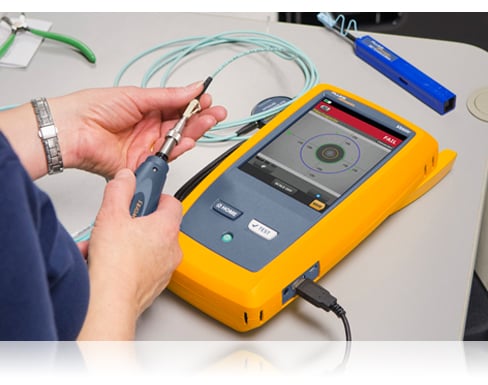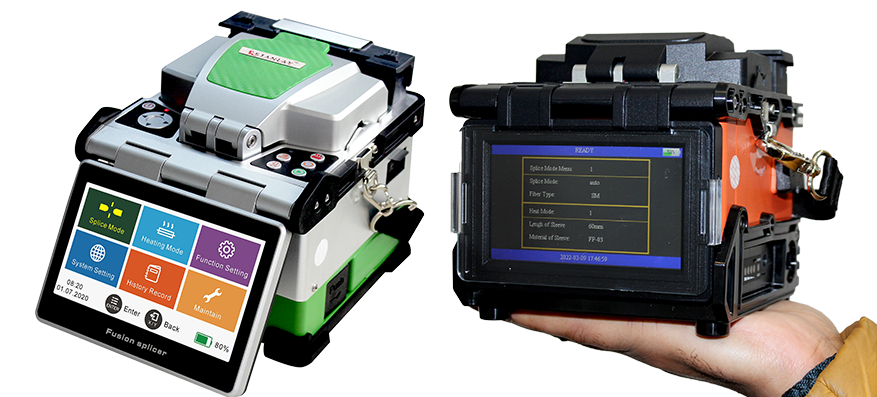All You Need to Understand About Robotic Vision and Its Applications in Advanced Optical Measurement Solutions
Robotic vision stands for a substantial development in the intersection of computer system vision, expert system, and device learning. This technology improves the accuracy of optical measurement systems, making it possible for real-time data analysis and improved quality assurance. Its impact covers several industries, from making to healthcare. However, the developing landscape of robot vision questions regarding future capacities and applications (optical measurement system). What advancements lie ahead in this transformative area?
Understanding Robotic Vision: Trick Concepts and Technologies
Robotic vision encompasses the modern technologies and techniques that allow equipments to interpret and recognize visual info from their environment. This field combines components of computer vision, expert system, and artificial intelligence to assist in computerized decision-making based on visual information. Secret principles include image handling, which involves the improvement and analysis of pictures to draw out purposeful functions, and object acknowledgment, which allows makers to identify and categorize items within a scene.

The Assimilation of Robotic Vision With Optical Measurement Equipments
As industries significantly demand precision and effectiveness, the combination of robotic vision with optical measurement systems has become a transformative technique. This synergy enables robotics to view and interpret their environments, enhancing the ability of optical measurement systems to analyze and evaluate objects with unparalleled precision. By gearing up optical sensors with sophisticated imaging technologies, robot vision makes it possible for real-time data collection and handling, helping with instant changes to dimension criteria.
The combination empowers automated systems to detect variants in dimensions, surface top quality, and positioning, which are important in quality control procedures. Boosted formulas, such as artificial intelligence, more augment this assimilation by improving the systems' capability to adapt to different atmospheres and circumstances. Subsequently, the combination not just enhances dimension procedures yet also decreases mistakes, guaranteeing that products fulfill rigid market criteria, consequently strengthening the role of robotic vision in the future of optical dimension systems.
Applications of Robotic Vision in Production
In modern production atmospheres, using vision systems has reinvented manufacturing processes by enabling makers to carry out jobs with impressive precision and rate. Robotic vision systems are progressively utilized for quality assurance, where they evaluate products for problems and assurance adherence to specs. These systems make use of electronic cameras and progressed algorithms to examine items in real-time, substantially reducing the threat of human error.
In addition, robotic vision facilitates automation in setting up lines, permitting robotics to accurately identify elements and construct them with marginal downtime. This technology likewise boosts supply monitoring, as vision systems can keep an eye on supply levels and detect inconsistencies, guaranteeing a seamless supply chain.
Furthermore, robotic vision help in the application of smart factories, where data from vision systems can be integrated with other modern technologies to enhance process. On the whole, the applications of robot official site vision in producing show its crucial function in enhancing efficiency, high quality, and performance throughout numerous fields
Robotic Vision in Medical Care: Reinventing Patient Treatment

In recovery, robotic vision help in checking client development and tailoring treatment sessions to private needs. It supports medical experts by automating tasks such as information collection and patient tracking, permitting even more time to concentrate on straight client interaction. In addition, robotic vision improves telemedicine by allowing remote diagnosis and digital examinations, connecting the void between people and doctor. Generally, the application of robot vision in healthcare is reinventing patient treatment, bring about enhanced results, efficiency, and patient complete satisfaction.
Future Fads and Advancements in Robotic Vision Innovation
The rapid advancement of robotic vision technology assures to further enhance its applications across numerous fields, consisting of medical care. Future patterns suggest a substantial shift towards incorporating expert system and maker understanding, making it possible for systems to learn from huge datasets and boost accuracy with time. Boosted sensing unit modern technologies and deep understanding algorithms are anticipated to fine-tune object recognition capacities, enabling robots to robotic vision translate complex atmospheres much more properly.

Moreover, the assimilation of enhanced reality (AR) with robot vision will likely reinvent exactly how robotics aid in medical procedures and diagnostics. This synergy will facilitate real-time data visualization, enhancing decision-making procedures. In addition, miniaturization of elements will result in more portable and functional robotic vision systems appropriate for a variety of jobs. As these developments unfold, industries will certainly witness raised automation and performance, strengthening robot vision as a keystone of ingenious technical services.
Frequently Asked Inquiries
What Are the Key Parts of a Robotic Vision System?
The main elements of a robotic vision system consist of cameras for picture capture, processors for information evaluation, algorithms for interpretation, and actuators for motion. Together, these components allow robots to view and communicate with their environment properly.
Exactly How Does Robotic Vision Improve Accuracy in Measurements?
Robotic vision improves measurement precision by utilizing advanced imaging technologies, enabling look at these guys precise things detection and spatial analysis. This ability lowers human mistake, enhances repeatability, and permits real-time modifications, eventually enhancing overall measurement integrity and performance.
What Industries Benefit Many From Robotic Vision Innovation?
Numerous industries benefit substantially from robot vision innovation, including production, healthcare, farming, and logistics. These fields use boosted accuracy, performance, and automation, resulting in boosted performance and minimized operational expenses in their respective procedures.
Can Robotic Vision Solutions Job in Low-Light Conditions?
Robotic vision systems can certainly work in low-light problems, utilizing advanced sensing units and formulas to boost photo clearness. This ability enables them to carry out effectively in various settings, consisting of industrial and security applications, also with marginal illumination.
What Are the Prices Connected With Implementing Robotic Vision?
The expenses associated with carrying out robotic vision differ substantially, influenced by components such as electronic cameras, software, and integration. Extra expenditures include upkeep, training workers, and potential upgrades to existing systems, which can gather gradually.